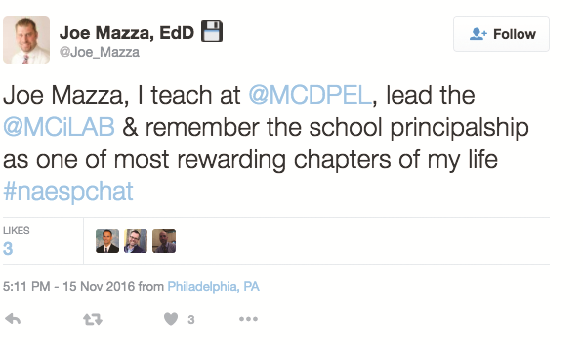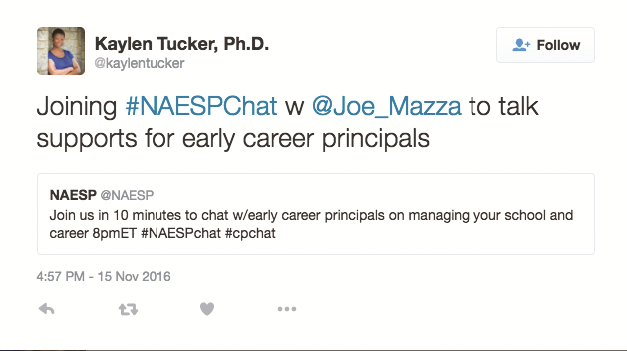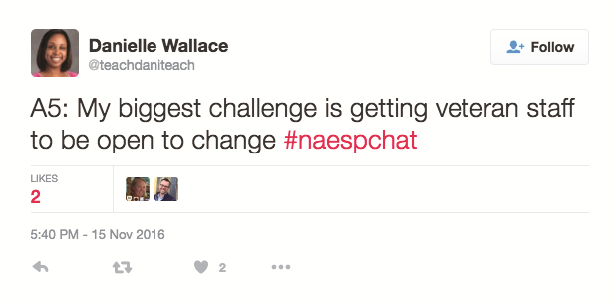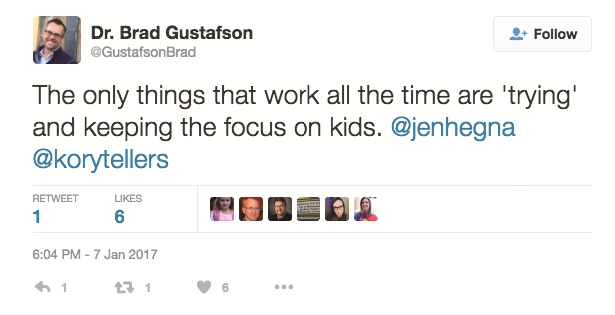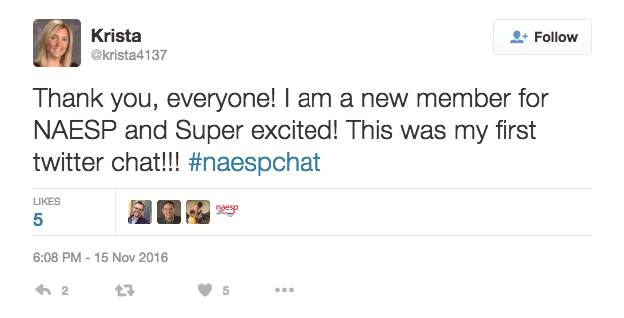Twitter Chats Made Simple
New to Twitter chats? Learn the basics with this guide.
New to Twitter chats? Learn the basics with this guide.
By Brad Gustafson
Principal, March/April 2017
Twitter—particularly Twitter chats—can be a powerful tool for educators. Connecting with other school leaders during a Twitter chat—an online discussion threaded together with a hashtag—can foster incredible professional dialogue and support, learning, and even friendship. In my own research on leadership, I’ve found that leaders who invest time connecting digitally bring unprecedented levels of collaboration and innovation to their campuses. The transformational power of Twitter is its ability to bring people with different opinions, resources, voices, and ideas together to connect, learn, and grow.
Ready to give Twitter chats a try? Here’s a step-by-step guide to direct your journey.
1. Review the Basics
What: Twitter chats create a cohesive group conversation around a topic, organized by a hashtag. Think of the hashtag (#) as a symbol that organizes tweets similar to how a file folder organizes papers within a desk drawer.
Who: Anyone from around the globe can participate.
Where: Online. Log in to Twitter and simply search for a specific chat hashtag. (Some of my favorite chats are #NAESPChat, #satchat, #edchat, #ptchat, etc.) You can participate in real time or review the tweets later.
When: Chats are scheduled by different organizations or individual chat moderators. There are education-related chats every day of the week. Pay attention to time zones when planning to join a chat.
2. Prep for the Trip
Pick a Twitter chat you’d like to join and follow the hashtag to determine the next topic. Brainstorm the key ideas you’d like to add to the discussion. Prepare shortened links (using a tool like Bitly) to any articles, resources, or graphics you’d like to share.
3. Dive In
As a chat happens, share your ideas using the chat hashtag, absorb ideas from fellow participants, or ask follow-up questions. Remember that Twitter can be a dynamic space to connect, learn, and grow, but how you use it and what role you play in a chat is completely up to you.
There are limitless professionals waiting to connect and collaborate around a myriad of important topics. Regardless of the role you choose to play in any given Twitter chat, it’s important to understand that the conversation is enhanced.
Meet the Characters
We’ll use the #NAESPChat for early career principals as an example. These profiles of actual participants represent who you may see in a chat.
MODERATOR
JOE MAZZA / @Joe_Mazza The moderator is the person who poses questions by posting tweets with Q1, Q2, Q3, and so forth. Most Twitter chats begin with brief introductions so participants learn more about fellow chatters.
ORGANIZER
KAYLEN TUCKER / @KaylenTucker & @NAESP Kaylen is the editor-in-chief of Principal magazine. She helped facilitate the chat and promote it ahead of time.
SHARER
DANIELLE WALLACE / @TeachDaniTeach Danielle is a second-year principal. She shared her biggest challenges as well as her best leadership strategies.
CONNECTION BUILDER
BRAD GUSTAFSON / @GustafsonBrad My approach to #NAESPChat was to personally connect with participants. I asked them for follow-up information and added encouraging words along the way.
“JUMP IN” CONTRIBUTOR
PATRICK HARRIS / @PresidentPat Patrick is a first-grade teacher. He joined the #NAESPChat conversation midway through. Twitter chats are extremely open spaces, so anyone can join from virtually anywhere on the planet.
LURKER
KRISTA KOTECKI / @Krista4137 Krista is a new principal, and this was her first chat. Many first-time chat participants choose to sit back, read, and reflect—sometimes called “lurking.” Lurking can be an easy way to dip your toe into the Twitter waters.
Brad Gustafson is principal of Greenwood Elementary School in Plymouth, Minnesota.
Copyright © National Association of Elementary School Principals. No part of the articles in NAESP magazines, newsletters, or website may be reproduced in any medium without the permission of the National Association of Elementary School Principals. For more information, view NAESP’s reprint policy.


